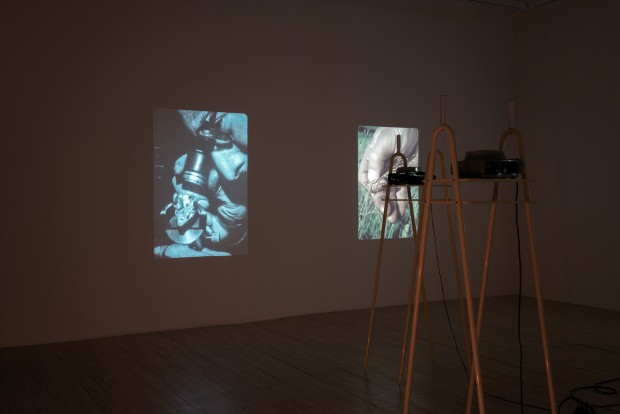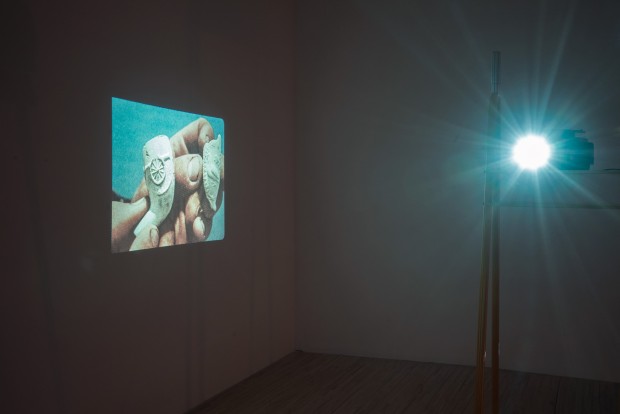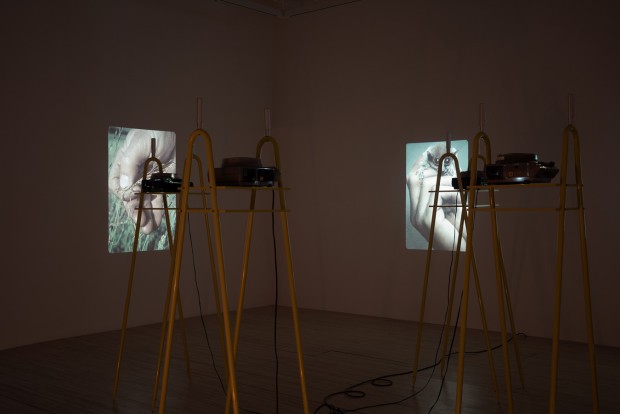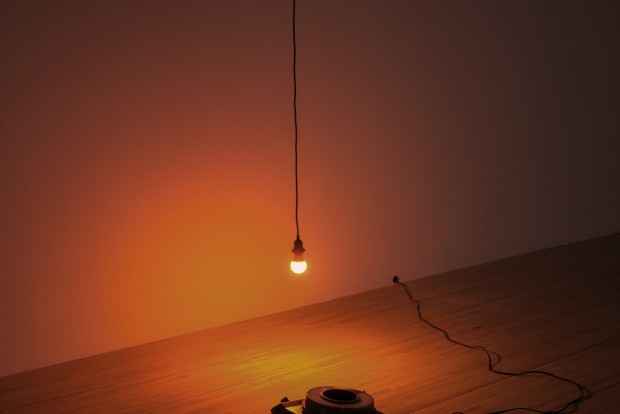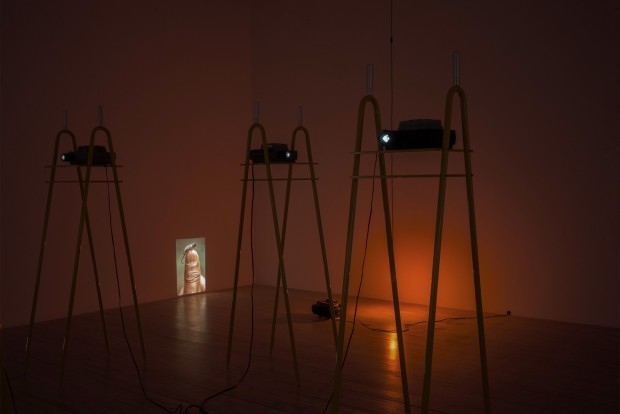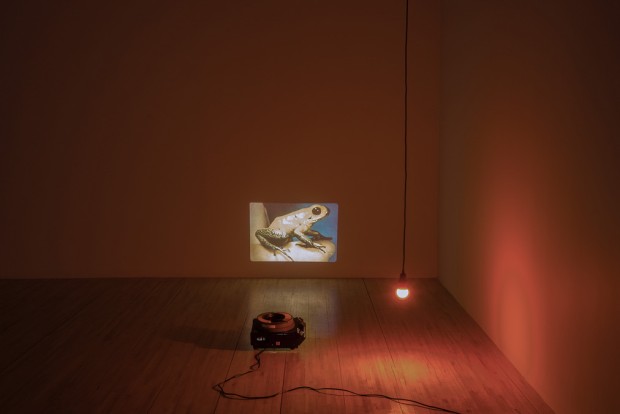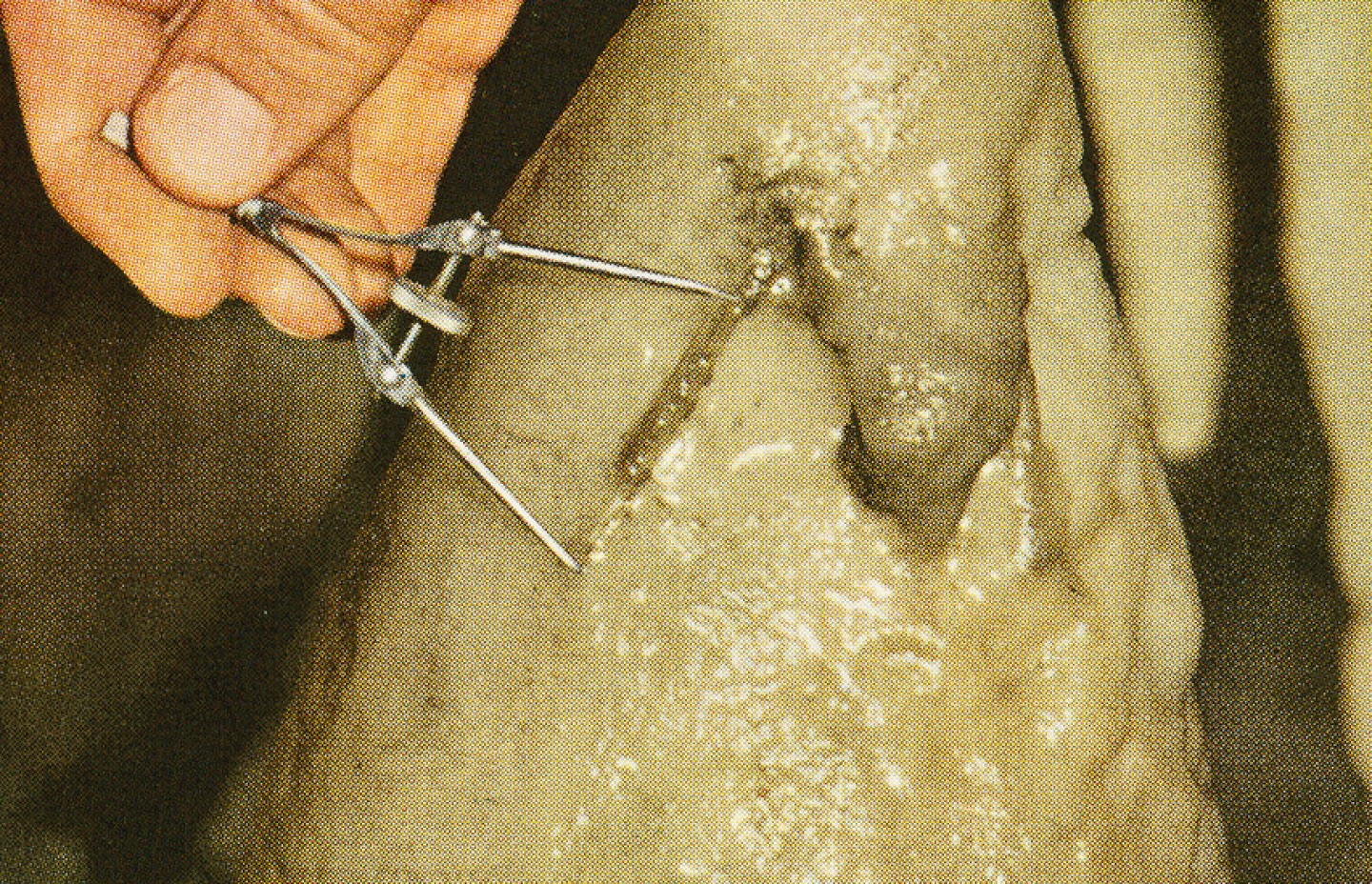
A History of an Object in 100 Years
Juan Ortiz-Apuy
- Exhibition
Content warning: the exhibition contains graphic images (death, dead animals, blood) and images from a Western bias point of view
Exhibition resulting from the program Autorésidences
Autorésidences is a remote residency program created by the AXENÉO7 artist-run centre in the exceptional context of the COVID-19 pandemic to continue to support research and development of current art practices.
For the first time, all people could see, with their own eyes, the people and objects of other times and far places. The printed picture has impressed the life of each of us, changed our tastes, affected our ideals and enriched our memories.
— Romana Javitz (1939)
A History of an Object in 100 Years is a multimedia installation consisting of 35mm slides, hanging darkroom light bulbs, and four automatic carousel projectors presented on powder-coated metal sculptures.
Images depicting hands holding or presenting an object to the camera were selected from the entire collection of 20th century National Geographic magazines. The images were then scanned and printed on film, and arranged not chronologically, but according to focal length and composition. Using the timer function on the projectors, the rolling sequence of images is meant to be experienced as a type of film: advancing slide by slide, or frame by frame.
The focus is placed on images of hands, as they are the interface that mediates our relationship to the material world. With our hands, we hold things and assert our intentions on matter. The film is partly a study of hand gestures: of hands probing, holding, propping, squeezing, pinching, displaying, etc.
In the absence of a caption or chronological order, the images were instead organized according to the photographer’s point of view: recontextualizing them according to framing and composition. What does this sequence of stills — this film — say about the magazine? Or about the photographer’s focus and positionality? Ultimately, a picture has many lives: depending on the photographer’s intent, the viewer and the context in which it is presented.
The images have also been categorized according to four types of shots in cinema: medium shot, medium close up, close up, and extreme close up — progressively zooming in and focusing on the objects and the fingers, and going as far as tiny objects on fingertips.
Together with the clicking sounds of the slides advancing, this pseudo-film tells the story of 100 years of objects “passing hands” through the lens of this magazine, with its complicated history of voyeurism and its ethnographic fascination with “exotic artifacts and animals“ for the consumption of audiences in the West.
— Juan Ortiz-Apuy
Juan Ortiz-Apuy is a Canadian-Costa Rican artist who has been living and working in Tiohtià:ke/Montreal since 2003. Ortiz-Apuy has a BFA from Concordia University (2008), a Post-Graduate Diploma from The Glasgow School of Art (2009), and an MFA from Nova Scotia College of Art and Design (NSCAD University, 2011).
His work has been exhibited internationally in venues such as Les Abattoirs (France), IKEA Museum (Sweden), Pamflett (Norway), and in Canada at DHC/ART Fondation pour l’art contemporain (now Centre PHI, Montreal), Owens Art Gallery (Sackville), Carleton University Art Gallery (Ottawa), MOMENTA Biennale de l’image (Montreal), Manif d’art — La biennale de Québec (Québec), Truck Contemporary Art (Calgary), Museum London (London), Gallery 44 Centre for Contemporary Photography (Toronto), VOX Centre de l’image Contemporaine (Montreal), and The McLaren Arts Centre (Barrie).
His work has been awarded numerous grants from the Canada Council for the Arts (CCA) and Le Conseil des arts et des lettres du Québec (CALQ), and has been reviewed in various publications such as Canadian Art, MOMUS, esse arts + opinions, Montreal Gazette, Le Devoir (Montreal), and Public Parking.
Ortiz-Apuy has completed several artist-in-residence programs, most notably at The Vermont Studio Center (United States of America), The Frans Masereel Centre (Belgium), and the Guldagergaard International Ceramic Research Center (Denmark). Ortiz-Apuy is an Assistant Professor in the Department of Studio Arts at Concordia University.
